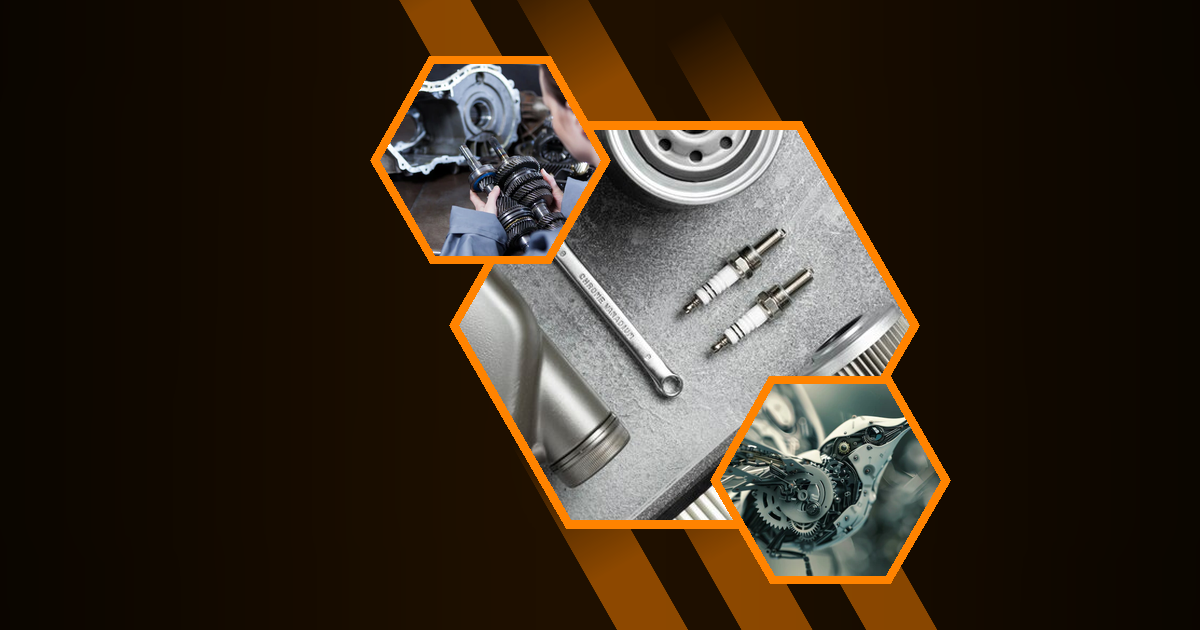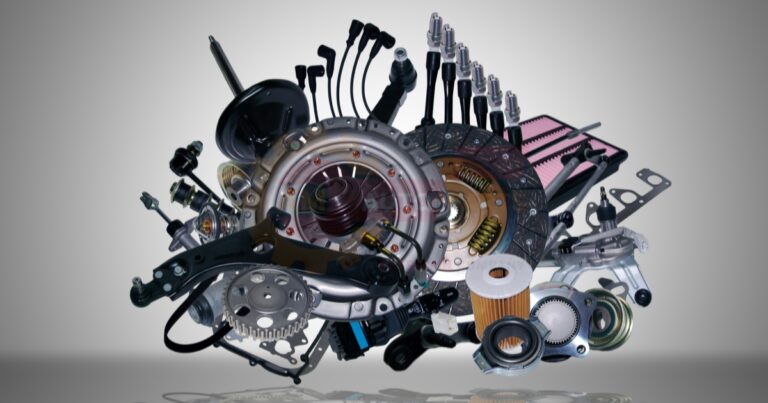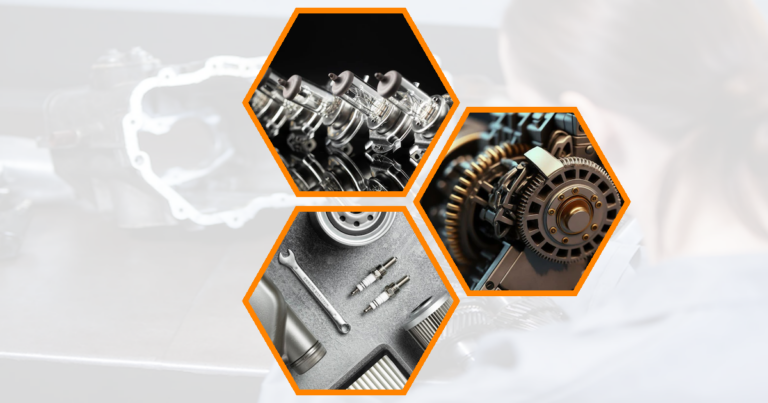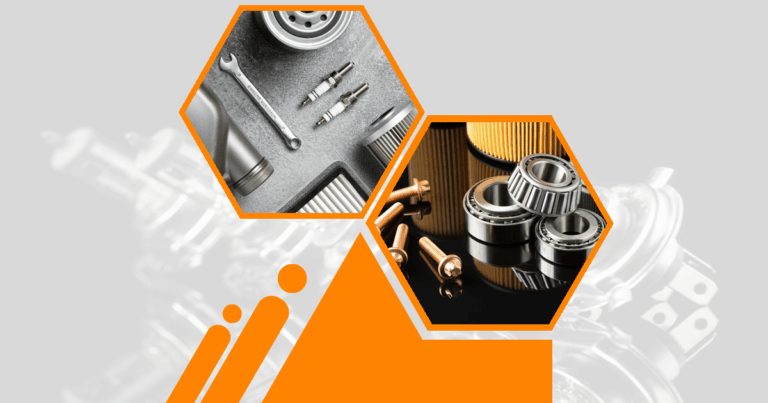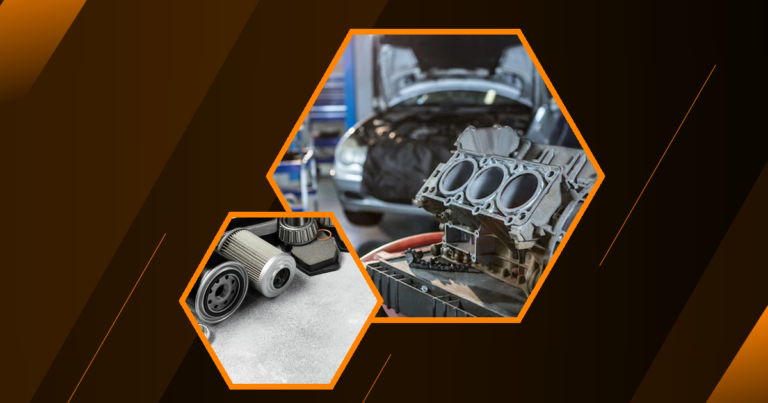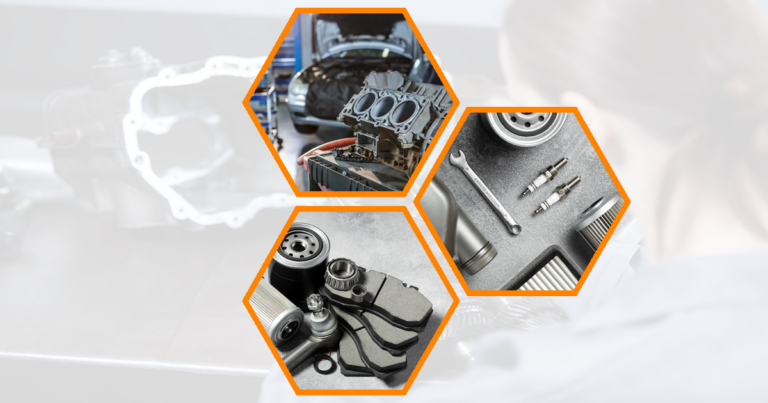What is an Ignition System?
An ignition system is a crucial component of internal combustion engines, responsible for initiating the combustion process. It provides the necessary spark to ignite the air-fuel mixture in the engine’s combustion chamber, allowing the engine to start and run efficiently.
The ignition system has evolved significantly since the early days of automobiles, becoming more sophisticated and reliable over time. Modern ignition systems are designed to deliver precise timing and consistent spark energy, ensuring optimal engine performance and fuel efficiency.
Purpose and Importance of Ignition Systems
The primary purpose of an ignition system is to generate and deliver a high-voltage electrical spark to each cylinder at the correct moment in the engine’s cycle. This spark ignites the compressed air-fuel mixture, creating the controlled explosion that powers the engine.
Ignition systems play a vital role in:
- Engine starting
- Smooth engine operation
- Fuel efficiency
- Emissions control
- Overall vehicle performance
A well-functioning ignition system ensures that the engine runs smoothly, efficiently, and with minimal emissions. Conversely, a faulty ignition system can lead to poor engine performance, increased fuel consumption, and higher emissions.
Types of Ignition Systems
Conventional Ignition System
The conventional ignition system, also known as the breaker point ignition system, was widely used in vehicles until the 1970s. This system relies on mechanical components to distribute the spark to each cylinder.
Key components of a conventional ignition system include:
- Contact breaker points
- Distributor
- Condenser
- Ignition coil
- Spark plugs
While reliable for its time, the conventional ignition system had limitations in terms of accuracy and maintenance requirements.
Distributorless Ignition Systems
Distributorless ignition systems (DIS) represent a significant advancement over conventional systems. As the name suggests, these systems eliminate the need for a distributor, resulting in improved reliability and performance.
In a DIS:
- Each cylinder (or pair of cylinders) has its own ignition coil
- Spark timing is controlled electronically
- Fewer moving parts lead to reduced maintenance
DIS offers better spark control and timing accuracy, contributing to improved engine efficiency and reduced emissions.
Electronic Ignition Systems
Electronic ignition systems are the most advanced and widely used in modern vehicles. These systems use electronic sensors and computer control to manage spark timing and distribution.
Benefits of electronic ignition systems include:
- Precise spark timing
- Improved fuel efficiency
- Reduced emissions
- Enhanced engine performance
- Lower maintenance requirements
Electronic ignition systems have largely replaced older technologies due to their superior performance and reliability.
Components of Electronic Ignition Systems
Battery
The battery serves as the primary power source for the ignition system. It provides the initial electrical current needed to start the engine and powers the vehicle’s electrical systems when the engine is not running.
Key points about the battery in ignition systems:
- Typically 12-volt in most vehicles
- Must maintain sufficient charge for reliable starting
- Regular maintenance and testing are essential for optimal performance
Ignition Switch
The ignition switch is the interface between the driver and the ignition system. It allows the driver to activate the ignition system and start the engine.
Functions of the ignition switch:
- Connects the battery to the ignition system
- Activates the starter motor
- Enables or disables various electrical systems in the vehicle
Electronic Ignition Module
The electronic ignition module, also known as the ignition control module, is the brain of the electronic ignition system. It receives input from various sensors and controls the timing and duration of the spark.
Key features of the electronic ignition module:
- Processes data from engine sensors
- Determines optimal spark timing
- Controls the primary circuit of the ignition coil
- Adjusts timing based on engine conditions
Ignition Coil
The ignition coil is responsible for transforming the low-voltage current from the battery into the high-voltage current needed to create a spark at the spark plugs.
Characteristics of ignition coils:
- Step-up transformer design
- Primary and secondary windings
- Can produce voltages up to 40,000 volts or more
- May be individual coils for each cylinder in some systems
Armature
The armature is a component found in some older ignition systems, particularly in magneto-based systems. In modern electronic ignition systems, its function is typically integrated into other components.
Distributor
While not present in distributorless systems, the distributor plays a crucial role in conventional and some electronic ignition systems. It distributes the high-voltage current from the ignition coil to each spark plug in the correct firing order.
Components of a distributor:
- Rotor
- Distributor cap
- Spark plug wires
Spark Plug
Spark plugs are the final component in the ignition system chain. They create the spark that ignites the air-fuel mixture in the combustion chamber.
Key aspects of spark plugs:
- Designed to withstand high temperatures and pressures
- Come in various heat ranges for different engine applications
- Require periodic replacement for optimal performance
Component | Function | Maintenance Requirement |
Battery | Provides initial power | Regular testing and charging |
Ignition Switch | Activates the system | Inspect for wear |
Electronic Ignition Module | Controls spark timing | Generally maintenance-free |
Ignition Coil | Generates high voltage | Replace if faulty |
Distributor | Distributes spark | Regular cap and rotor inspection |
Spark Plug | Creates spark in cylinder | Replace at recommended intervals |
How Electronic Ignition Systems Work
Step-by-Step Process
The operation of an electronic ignition system involves a series of precisely timed events:
- The ignition switch is turned on, activating the system.
- The crankshaft position sensor sends signals to the electronic control unit (ECU).
- The ECU processes this information along with data from other sensors.
- Based on this data, the ECU signals the ignition module to trigger the appropriate ignition coil.
- The ignition coil transforms the low-voltage current into high-voltage.
- This high-voltage current is sent to the correct spark plug via the distributor (in systems that use one) or directly (in distributorless systems).
- The spark plug creates a spark, igniting the air-fuel mixture in the cylinder.
This process repeats continuously as the engine runs, with the ECU constantly adjusting timing based on engine conditions.
Advantages Over Conventional Systems
Electronic ignition systems offer several advantages over conventional systems:
- More precise spark timing
- Better fuel efficiency
- Reduced emissions
- Improved cold-starting performance
- Lower maintenance requirements
- Enhanced durability and reliability
These advantages have made electronic ignition systems the standard in modern vehicles, contributing to improved overall performance and reduced environmental impact.
Common Ignition System Problems and Solutions
Symptoms of Ignition System Failure
Recognizing the signs of ignition system problems can help prevent more serious issues:
- Engine misfires or runs roughly
- Difficulty starting the engine
- Poor fuel economy
- Loss of power during acceleration
- Check Engine light illumination
If you experience these symptoms, it’s important to diagnose and address the issue promptly to prevent further damage to your vehicle.
Troubleshooting Tips
When faced with ignition system issues, consider these troubleshooting steps:
- Check the battery voltage and connections
- Inspect spark plugs for wear or damage
- Examine ignition wires for cracks or loose connections
- Test the ignition coil for proper resistance
- Scan for diagnostic trouble codes using an OBD-II scanner
For more complex issues, it’s advisable to consult a professional mechanic or refer to your vehicle’s service manual.
Maintaining Your Ignition System
Regular Inspection and Maintenance
Proper maintenance can extend the life of your ignition system and prevent unexpected failures:
- Regularly check and clean battery terminals
- Replace spark plugs at recommended intervals
- Inspect ignition wires for signs of wear
- Keep the engine bay clean to prevent moisture and debris buildup
- Follow the manufacturer’s recommended maintenance schedule
Regular maintenance not only ensures reliable operation but can also help identify potential issues before they become serious problems.
When to Seek Professional Help
While some ignition system maintenance can be performed by DIY enthusiasts, certain situations call for professional assistance:
- Complex diagnostic issues
- Replacement of major components like the ignition module or ECU
- When specialized tools or equipment are required
- If you’re unsure about any aspect of the repair process
AM Autoparts recommends consulting a certified mechanic for any ignition system repairs beyond basic maintenance to ensure proper diagnosis and repair.
Advancements in Ignition System Technology
Smart Ignition Systems
Smart ignition systems represent the cutting edge of ignition technology. These systems integrate advanced sensors and artificial intelligence to optimize spark timing and energy:
- Adaptive learning algorithms adjust to driving conditions
- Integration with other vehicle systems for holistic performance optimization
- Real-time monitoring and adjustment of ignition parameters
Smart ignition systems promise even greater efficiency and performance improvements in future vehicles.
Future Trends in Automotive Ignition
The future of automotive ignition systems is closely tied to broader trends in vehicle electrification and automation:
- Integration with hybrid and electric powertrains
- Enhanced connectivity for remote diagnostics and updates
- Increased use of predictive maintenance technologies
- Development of more durable and efficient spark plug designs
As vehicles become more advanced, ignition systems will continue to evolve to meet the demands of new powertrain technologies and environmental regulations.
Ignition System Repair and Replacement
DIY vs. Professional Repair
When it comes to ignition system repairs, it’s important to know your limits:
DIY-friendly tasks:
- Replacing spark plugs
- Cleaning battery terminals
- Inspecting and replacing ignition wires
Tasks best left to professionals:
- Diagnosing complex electronic issues
- Replacing ignition modules or ECUs
- Major distributor repairs or replacements
Always consult your vehicle’s manual and consider your skill level before attempting any repairs.
Cost Considerations
The cost of ignition system repairs can vary widely depending on the issue and the vehicle:
- Spark plug replacement: 0-00
- Ignition coil replacement: 50-00
- Distributor replacement: 00-00
- Complete ignition system overhaul: 00-500+
These are approximate costs and can vary based on vehicle make, model, and local labor rates. AM Autoparts offers competitive pricing on quality ignition system components for those opting for DIY repairs. Transmission self-shifts gears automatically changes gears in a vehicle without the driver having to do it manually This type of transmission makes driving easier especially for new drivers Manual gearbox mechanics The driver uses a clutch pedal and gear stick to change gears in a car with
Steering mechanism control helps drivers turn their cars easily It makes the wheels move in the direction you want to go Genuine parts verification helps make sure car parts are real and not fake It protects your car from damage caused by using wrong or low-quality parts
Engine components comparison Different engines have various parts that work together and comparing these parts helps us understand how each engine functions and performs Camshaft engine component The
Vehicle oscillation reducers help make car rides smoother They stop the bouncing and shaking that can happen when driving Disc brake analysis helps us understand how well brakes work on vehicles It looks at things like heat friction and wear to make brakes safer and last longer
Environmental Impact of Efficient Ignition Systems
Reduced Emissions
Efficient ignition systems play a crucial role in reducing vehicle emissions:
- More complete combustion leads to lower hydrocarbon emissions
- Precise timing reduces nitrogen oxide formation
- Improved fuel efficiency results in lower overall emissions
Modern ignition systems contribute significantly to meeting increasingly stringent emissions standards worldwide.
Improved Fuel Economy
The impact of efficient ignition systems on fuel economy is substantial:
- Optimal spark timing ensures maximum energy extraction from fuel
- Reduced misfires and incomplete combustion events
- Better cold-start performance reduces fuel waste during warm-up
Studies have shown that advanced ignition systems can improve fuel economy by up to 5% compared to older technologies.
FAQs
What are the main differences between conventional and electronic ignition systems?
Conventional and electronic ignition systems differ significantly in their design and operation. Conventional systems rely on mechanical components like breaker points and a distributor to control spark timing and distribution. In contrast, electronic systems use sensors and computer control to manage these functions. Electronic systems offer more precise timing, better reliability, and lower maintenance requirements. They also provide improved fuel efficiency and reduced emissions compared to conventional systems.
How often should spark plugs be replaced in modern vehicles?
The replacement interval for spark plugs in modern vehicles varies depending on the type of spark plug and the vehicle manufacturer’s recommendations. Generally, standard copper spark plugs should be replaced every 30,000 to 50,000 miles. However, many modern vehicles use long-life platinum or iridium spark plugs that can last up to 100,000 miles or more. It’s essential to consult your vehicle’s owner’s manual for the specific replacement interval recommended by the manufacturer.
Can a faulty ignition system affect fuel efficiency?
Yes, a faulty ignition system can significantly impact fuel efficiency. When the ignition system is not functioning properly, it can lead to incomplete combustion, misfires, and poor engine performance. These issues cause the engine to consume more fuel than necessary to produce power. Additionally, a faulty ignition system may cause the engine to run rich (with excess fuel), further reducing fuel efficiency. Regular maintenance and prompt repair of ignition system issues are crucial for maintaining optimal fuel economy.
What causes an ignition system to fail?
Ignition system failure can be caused by various factors. Common causes include worn or fouled spark plugs, degraded ignition wires, faulty ignition coils, or a malfunctioning ignition module. Environmental factors such as extreme temperatures, moisture, or corrosion can also contribute to system failure. In some cases, electrical issues like a weak battery or alternator problems can indirectly affect the ignition system’s performance. Regular maintenance and inspection can help prevent many of these issues and extend the life of your ignition system.
How do I know if my car needs a new ignition coil?
Several symptoms can indicate a failing ignition coil. These include engine misfires, rough idling, poor acceleration, and decreased fuel efficiency. You may also experience difficulty starting the engine or notice that the check engine light is illuminated. In some cases, a faulty ignition coil can cause the engine to stall or fail to start altogether. If you suspect an ignition coil issue, it’s best to have your vehicle diagnosed by a professional mechanic who can perform the necessary tests to confirm the problem and recommend the appropriate repairs.
Are electronic ignition systems more reliable than conventional ones?
Electronic ignition systems are generally considered more reliable than conventional systems. They have fewer moving parts, which reduces the potential for mechanical wear and failure. Electronic systems also provide more precise control over spark timing and energy, leading to more consistent performance. Additionally, they are less affected by environmental factors like moisture and temperature changes. While no system is entirely immune to failure, electronic ignition systems typically require less maintenance and offer longer service life compared to conventional systems, making them a more reliable choice for modern vehicles.
